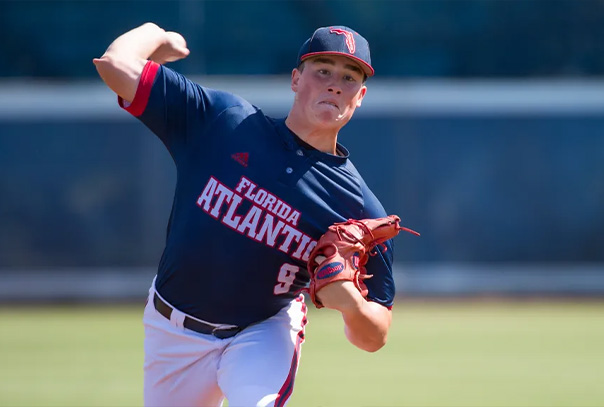 Regardless of the level, the outcome of many games is based on who plays catch the best. From contests being played at Yankee Stadium all the way down to Sugar Sand Park, baseball is really just an elaborate game of catch, something we all did as kids in the backyard with moms, dads, brothers, friends and garage doors—anyone or anything that could get the ball back to us!
Regardless of the level, the outcome of many games is based on who plays catch the best. From contests being played at Yankee Stadium all the way down to Sugar Sand Park, baseball is really just an elaborate game of catch, something we all did as kids in the backyard with moms, dads, brothers, friends and garage doors—anyone or anything that could get the ball back to us!
We must emphasize good form and technique when our players warm up. Catch play should be monitored just like batting practice, bullpens and baserunning. Getting the players to lock in and have a meaningful game of catch before practice starts is vitally important. This can’t happen without a sound routine, which can be as simple as stretching and a good 60-foot catch at the youth level. Start slow; break your team into groups and go one at a time to ensure that you are emphasizing hitting your partner in the chest. This is toughest at the youth levels because the ball is usually too big for their hands, so the point of emphasis would be making sure their release point is out front and following through on their throw. I know it’s not easy, but it’s worth the effort!
Learning how to catch and throw will benefit the player for the rest of their time in the game. The older you get without learning these skills, the harder they are to learn; as players get older, catch play evolves into long toss and more position-specific drills.
Here are a few things you can try at your next practices:
First, have the kids play catch and make sure they hit each other in the chest. After each completed throw have them take a step back. If they drop the ball or throw it out of their partner’s catching radius, they sit down. The last team standing is the winner. Depending on age the catching radius can be bigger, also if they get too far apart, they can one-hop the throw. For round two, you can award two points for hitting your partner in the head and one for the chest.
Another team-centric way to emphasize catch play is the “Hub Drill,” which can be done in groups of five. Start with one player on the mound and one at each base, including home plate. The player on the mound starts by throwing a ball home and receives an immediate throw back. He then shuffles his feet and throws to first, once again receiving a throw back. He repeats the same process at second and third and once the first round is completed, the catcher moves to the mound, the pitcher moves to first and everyone else rotates accordingly. This continues until all five players have had a chance on the mound. As a coach you can first score this by mistakes, and then by time. It’s a great way to create pressure situations and develop competitive players, with the main points of emphasis being short, accurate throws and efficient footwork between them.
If you don’t have access to the infield, you can also play a similar game that we just call “Relay Race,” where players line up in the outfield in groups, the player on the end starts and the ball has to be relayed to each teammate all the way across the outfield and back. Whoever does it quickest wins. Points of emphasis here remain on quick, accurate throws along with receiving the ball on the forehand side, which is a crucial aspect of cuts and relays.
I have had a really good experience with these concepts as it relates to developing players regardless of position and keeping practice from getting monotonous. It’s also a great way to teach your players how to compete. Now let’s go have a game of catch!
FAU Hall of Famer John McCormack began his coaching career in 1991 as an assistant and took over as head coach of the Owls prior to the 2009 season. “Coach Mac” has led FAU to four regular season conference championships and six regionals. He has coached 13 All-Americans and ushered more than 130 players into professional baseball, including active big leaguers Austin Gomber, Pedro Pages and Nolan Schanuel, who was the 11th overall pick in the 2023 MLB Draft and the subject of Inside Pitch’s March-April 2024 Frame by Frame.